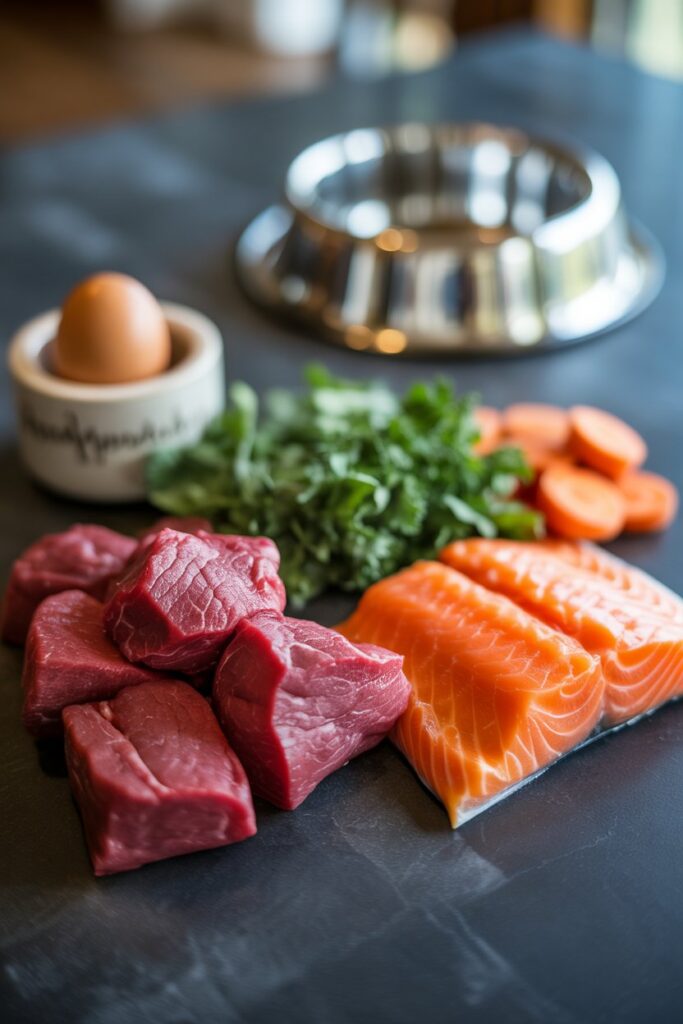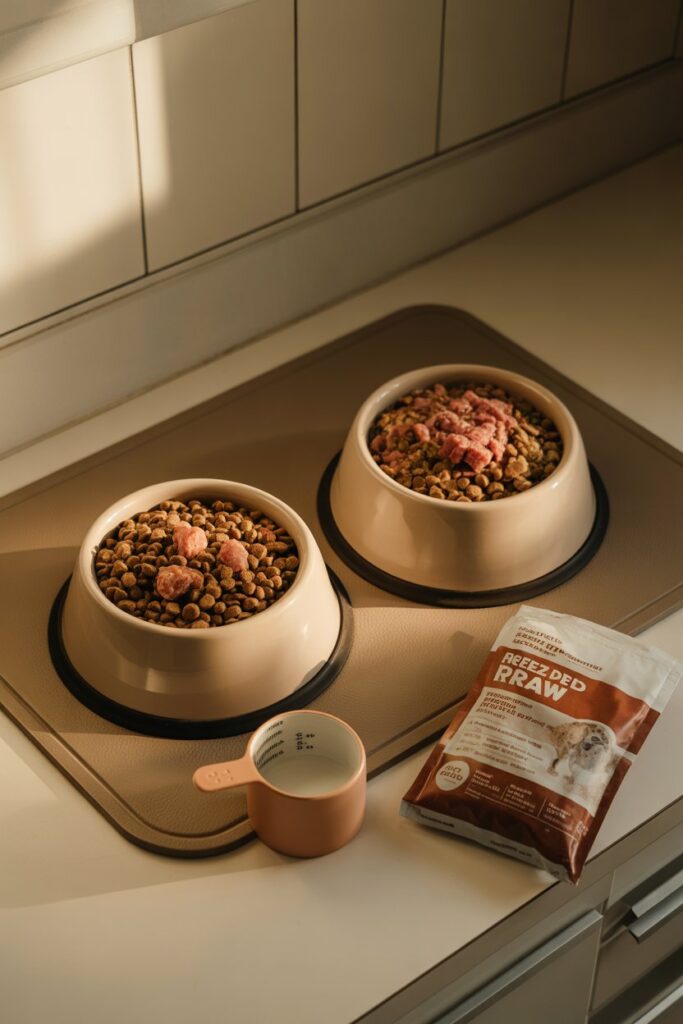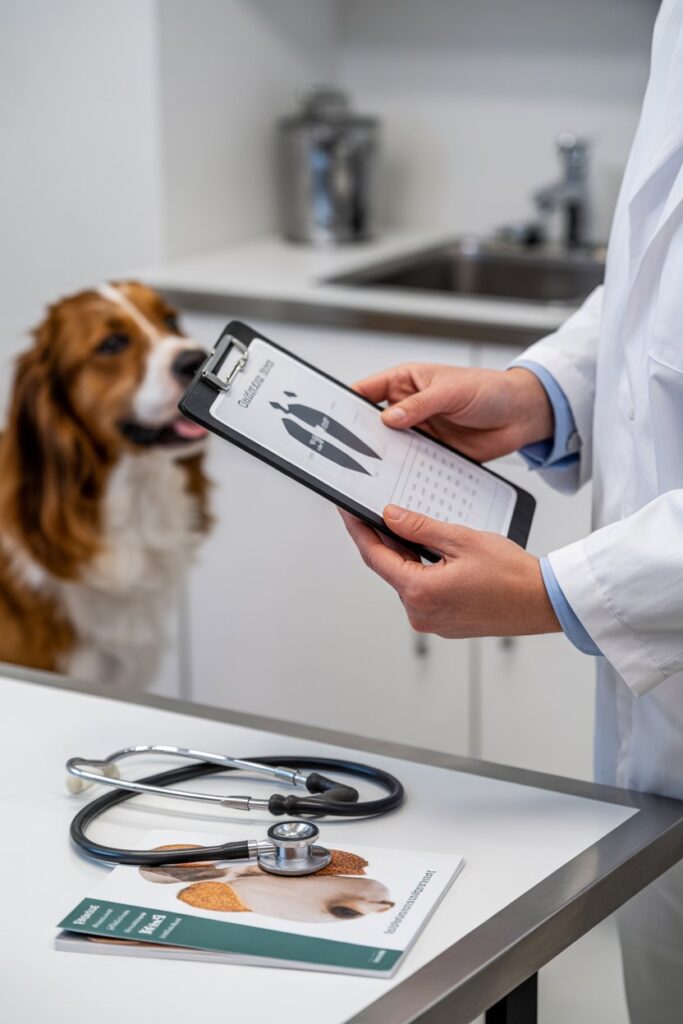Transitioning your dog to raw food safely means making the change gradual and balanced. It should also fit your pet’s needs. Many dog owners choose raw feeding for its benefits.
These include better digestion, a shinier coat, and more energy. But switching too quickly or without a plan can lead to stomach issues or nutritional problems.
That’s why it’s crucial to take a step-by-step approach that supports your dog’s health. In this blog, we’ll show you the safest and most effective ways to add raw food to your dog’s diet.
You’ll learn about adjusting portions and monitoring their reactions. This will help you make the transition smooth, healthy, and stress-free for your furry friend.
Why Choose Raw Food?

Switching your dog to a raw food diet helps with digestion. Many dogs digest raw food more easily than processed kibble. This change can lead to fewer stomach issues and a happier pet.
A raw food diet also improves your dog’s coat health. The natural oils in raw meat and bones can make their fur shinier. This diet can also reduce shedding for a healthier appearance.
Feeding your dog raw food boosts their energy levels. Raw meat offers a natural source of protein and essential nutrients. This helps your dog feel more energetic and lively during the day.
Shop the best raw feeding essentials for dogs on Amazon today
Preparation is Key

Start by sourcing high-quality ingredients for your dog’s raw meals. Look for fresh, organic meats and veggies from trusted suppliers. Fresh, contaminant-free ingredients are key for your dog’s health.
Hygiene is crucial when preparing raw food. Always wash your hands, utensils, and surfaces well before and after handling raw meat. This prevents harmful bacteria from spreading to your dog and family.
Transitioning your dog to raw food should be gradual. Begin by mixing small amounts of raw food with their regular diet. Slowly increase the raw portion over time to help your dog’s digestive system adjust smoothly.
Start Slowly

When switching your dog to raw food, start by mixing a little raw food with their current diet. Slowly increase the raw portion while reducing the old food. This helps their digestive system adjust without discomfort.
Watch your dog’s reactions during the transition. Look for signs like changes in stool or energy levels. This helps you see if the switch is going well or if you need to adjust the diet.
Introduce different raw foods over time for a balanced diet. Include various protein sources and vegetables for essential nutrients. This gradual change prevents nutritional gaps and keeps your dog excited about their meals.
Check these top-rated raw diet products available now on Amazon
Monitor Your Dog’s Health

As you switch your dog to raw food, monitor their health closely. Look for signs like a shinier coat or more energy. These changes may mean the new diet is working well.
Also, watch for any signs of discomfort or illness, such as vomiting or diarrhea. These can mean the transition is too quick or that some ingredients don’t suit your dog. Adjust their diet as needed for their comfort.
Regular vet visits are important during this time. Your vet can give advice specific to your dog’s needs. This ensures the shift to a raw food diet is smooth and good for their health.
Consult Your Vet

Talk to your vet to make sure your dog’s raw food diet is balanced. They can help you choose the right portions and ingredients. This keeps your pet healthy and provides all needed vitamins and minerals.
Your vet can also guide you on how to introduce raw food safely. They’ll help you reduce risks like digestive upset. Start with small amounts of raw food while still feeding your dog their regular diet.
Regular check-ups with your vet are key when changing to a raw food diet. They will check your dog’s health, weight, and overall well-being. This support helps catch any issues early on.
Discover trusted raw feeding supplies for your pup right on Amazon
Conclusion
Switching your dog to a raw food diet takes time and planning. Follow these steps and watch your dog’s health closely for success.
Always talk to your vet to ensure the diet meets your dog’s needs. With the right approach, your dog can enjoy benefits like better digestion and a shinier coat.
How Long Should It Take to Transition a Dog to Raw Food?
A gradual transition usually takes 7 to 14 days. However, it depends on your dog’s digestive health and tolerance.
Start by mixing a small amount of raw food with their regular meals. Then, slowly increase the raw portion while decreasing the old diet.
This method lowers the risk of digestive upset. It also helps your dog’s body adjust to the new nutrients. Some dogs might need extra time, especially if they’ve eaten processed kibble for years.
What Are the Benefits of Feeding a Dog Raw Food?
Raw feeding can improve digestion, make coats shinier, and boost energy. Many pet owners see less shedding and healthier skin from the natural oils in raw meat.
This diet offers a more natural nutrient profile than processed foods. It may support better long-term health and vitality in dogs.
Can All Dogs Eat a Raw Food Diet?
Many dogs do well on raw food, but some need special diets. Puppies, seniors, and dogs with health issues should follow a vet-approved raw diet plan.
Always talk to your vet before making changes. They can help create a diet that meets your dog’s needs, ensuring balanced nutrition and safety.
What Foods Should I Avoid When Feeding Raw?
Some foods are toxic to dogs. Never give them cooked bones, onions, grapes, or chocolate. Even raw potatoes are unsafe.
Stick to fresh meats, safe vegetables, and dog-friendly fruits. Avoid anything that may cause illness or digestive issues.
How Do I Ensure My Dog’s Raw Diet Is Balanced?
A balanced raw diet has muscle meat, organs, bones, and some vegetables or fruits. Each component provides key nutrients for your dog’s health.
Some owners use the “80/10/10” rule. This means 80% meat, 10% bone, and 10% organ meat. Regular vet check-ups help ensure your dog gets all the nutrition they need.
